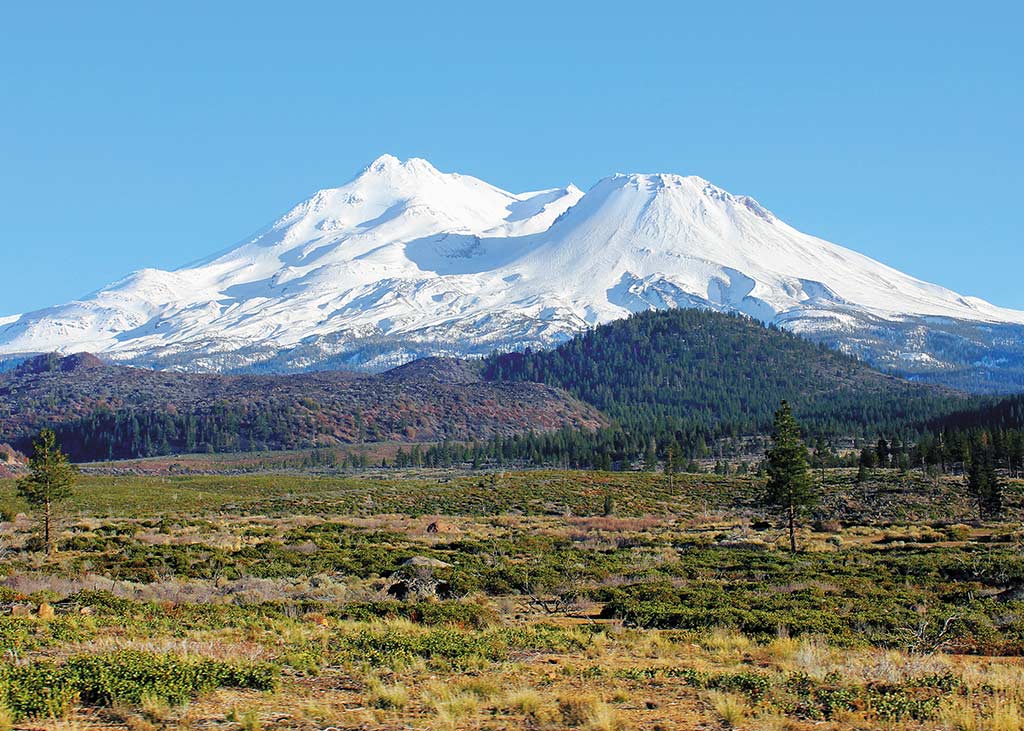Northern California Getaway: Mounts Shasta and Lassen
The mountains in the far northern reaches of California are some of the most unspoiled areas in the state, protected by a wealth of national and state parks and forestlands.
The most prominent features of this region are two iconic mountains: Shasta and Lassen. The stunning snow-capped peak of Mount Shasta may look familiar—it often graces calendars, postcards, and photography books. Shasta is a dormant volcano, which means it’s not extinct—it will erupt again—but unlike an active volcano, it probably won’t do so soon. Mount Shasta, and the town and lake that share its name, are easy to get to. The mountain itself, though, is daunting to climb and should be attempted only by experienced climbers.

South of Mount Shasta is the major resort area of Shasta Lake, which attracts boaters and water enthusiasts from far and wide.
Mount Lassen, about 150 miles southeast of Shasta, is classified as an active volcano, and the national park that surrounds it includes many volcanic features—boiling mud pots, steam vents, and sulfur springs. Both mountains make great vacation destinations, beautiful to behold and surrounded by recreation opportunities. Not quite as many visitors flock to Lassen as they do to Shasta, yet scaling Mount Lassen’s peak is only a moderate day hike, accessible to almost anyone who is fit and game to try it.
As you drive up into this remote area, you’ll discover a number of quirky places worth a visit of their own. Go underground at Lava Beds National Monument, scale the cliffs at Castle Crags, feel the spray of waterfalls at McArthur-Burney Falls, and discover the sad and shameful history of a World War II Japanese “segregation center” at Tulelake.

Planning Your Time
Either Shasta or Lassen make a fabulous weekend getaway—particularly if you’ve got a three-day weekend. Mount Shasta offers fairly easy and reliable year-round access along I-5 with both winter and summer outdoor recreation. The weather on and near Shasta can get extreme; expect winter storms half the year and occasionally brutally high temperatures in the summer months. Check the weather reports so you can pack the right clothes for your trip. If you’re planning to climb even part of Mount Shasta, be aware that it’s high enough to create its own weather.
The best time to visit Mount Lassen is mid to late summer. Lassen is in the remote eastern part of the state, where the weather gets extreme; it can still be snowy on Lassen as late as June, so keep that in mind when you make your camping plans. During winter the main road through the park closes, making a visit to the region far less interesting—unless you’ve brought snowshoes or skis to explore the backcountry.